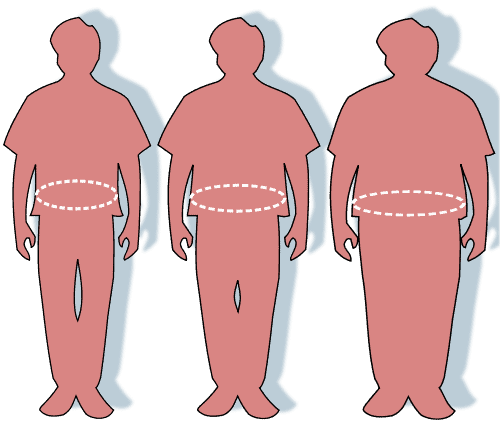We Americans are on a very terrifying path, health-wise, based on the latest obesity projections from RWJF.
Medical “innovations” around the obesity epidemic are unsettling, to say the least. Most recently, Dean Kamen (of Segway fame) filed a patent for a self-serve Stomach-Pumping Machine.
Disturbing medical devices aside, what does the obesity crisis mean to healthcare IT (HIT)? Yes, increasing obesity rates means more metabolic syndrome, more intervention, more biometric data,more data stored in EHRs, more HIE to share that data, more clinical analytics and care coordination software, …
Does this sound interesting to you? In my research I am more focused on how technological innovation can function as a solution to the obesity crisis. First let’s consider the payers — the large, innovative ones who continue to rally for behavior change.
Payer-Sponsored Wellness & Patient Engagement Soldier On
Payer-sponsored behavior change programs have never sustained results in the long term, but this doesn’t stop the early adopters from soldiering on. For our 2012 Payer Benchmark Report, we profiled several large, innovative payers working to engage their members and the public through low-cost consumer technologies.
Some interesting new developments in this space include:
- Aetna is looking to make running on a treadmill bearable. Its new ‘Passage’ app (storing data in CarePass), promises to make exercisers feel as if they are travelling within a city of their choosing.
- Cigna has just released a ‘Healthy Living App Pack’, bundling the extremely popular FoodEducate app with 3 less-popular ones. (Cigna didn’t develop FoodEducate, but licensed it from founder Hemi Weingarten).
- Humana has begun offering the HumanaVitality rewards system to a group of Medicare Advantage members. Let’s hope that seniors will take more kindly to this program than to HumanaVille, Humana’s failed attempt at creating an online senior health education community.
Consumer Health Companies Need to Move Beyond Fanatics
If payer apps can’t motivate widespread weight loss, then maybe the consumer space can? Consumer companies are currently busy developing software and testing out motivational models on the fly. This is not exactly the scientific method but it works for small agile environments…and is definitely something that large payers are less adept at.
There is a belief among many of the quantified-self set that just the act of presenting health data to the consumer affects behavior change. I seriously doubt this, and believe that consumer health startups have played a miniscule role in affecting real behavior change. So far, they have provided diet and exercise fanatics better tools to fuel their obsession.
In order to reach the ‘bottom of the pyramid’, must we then dole out dollars for weight loss? I recently spoke with Gregory Coleman, one of the founders of nExercise, which offers a gamified “rewards program” where users randomly accumulate points, similar to a lottery, which can be applied towards real world discounts.
(nExercise is also the driving force behind the recently formed FITco, or ‘Founders In Technology Combating Obesity’. FITco functions as a place for founders to form data sharing/interoperability partnerships, and aggregate marketing dollars).
Talking with Gregory, I found myself better understanding the challenges these consumer companies are up against as they seek to move beyond their core base. In offering financial incentives, they must spark interest without destroying intrinsic motivation. Framing financial incentives in term of ‘rewards’ and ‘discounts’ helps, but the real goal is to wean users off of them.
Cash, Friends, and Coaching: A Pipe Dream?
Several academic studies have shown that a combination of financial incentives, social support, and coaching from a trusted ally, produced significant behavior change, at least in the short term.
I can imagine a day when I seamlessly upload exercise and diet related data into a CarePass-type platform, where:
- my insurance carrier’s app notices that I have been working out, maintaining my BMI, and applies discounts to my premium.
- my doctor’s app (motivated by value-based reimbursement), suggests that I keep my maximum heart rate below 160 BPM
- I display achievement badges to my friends, and make my data available to health companies in order to receive discounts/free samples
Hmmm, what is that distant feeling of unease, the feeling like I am a pawn in someone else’s Grand Plan? It might have something to do with the complete loss of privacy around my data. However, if those premium discounts are steep enough, I can live with that.
Whether we get people sharing their health data or tempt them with financial incentives for weight loss, the systematic nature of the obesity problem remains a force to contend with. In the end it will be up to all of us to push back against the institutions that make us fat. Seeking out motivational consumer solutions is a low cost place to start.





Your idea of cash, friends, coaching is not a pipe dream. At Mobile PRM we see the future of changing behaviors tied to the ability to earn and aggregate reward points from multiple stakeholders for improved medication compliance, goal progress, social sharing, education, etc. See how it works (<2 min fun video)
http://www.youtube.com/watch?v=2r2xApdH7l8
Pamela, nice to hear from you! I’ll be in touch re: mobileprm as I start working on the update to our payer/behavior change/consumer tech report.
Cora